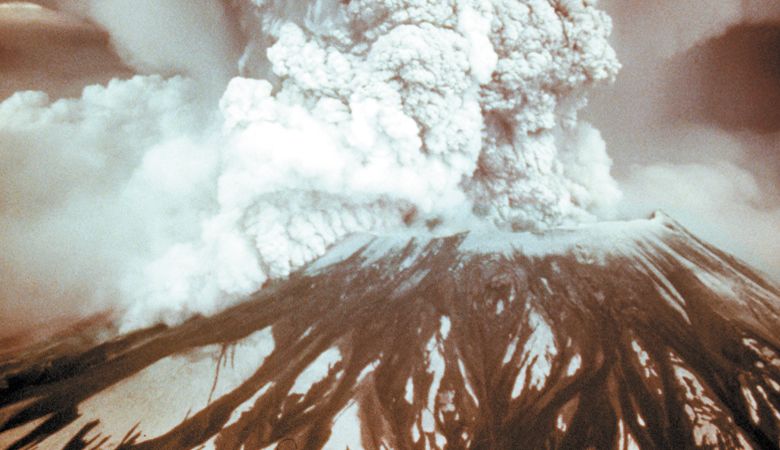Collaboration Is Key
Lessons from Mount St. Helens
I grew up in the ’70s on one of the first commercial vineyards in the Red Hills of Dundee. However, the glamour of the industry was lost on me at the time. While my family cleared our vineyard site that first year, I talked on a red, rotary dial phone attached by 50 yards of telephone cable to a garden stake — true story. Intermittently, I helped plant rows of cuttings, using Alpenrose Dairy milk cartons and grudgingly watered them while we were building our family home, now the site of Torii Mor’s tasting room.
When Oregon tasting rooms were ordered to close in late March to mitigate the spread of COVID-19, the Willamette Valley Winery Association quickly developed the hashtag #WVCommunity on social media sites to aid in preserving the industry’s well-regarded collaboration. Recipes, donations, discounts and custom delivery options soon flowed onto the site. Deals like the “social distance six-pack” proliferated.
Community and collaboration remains the heart of Oregon wine and has been since the early days.
Just as most of us have felt overwhelmed — by the severity of the virus and the interruption to life as we’ve known it — so were vineyard and winery owners in the spring of 1980, when Mount St. Helens erupted. In no way was this event as severe as the current crisis, but a correlation exists as a major disrupter to the nascent Northwest wine scene, throwing the growing season into economic turmoil.
Flashback to forty years ago, growing up in the Dundee Hills: Instead of e-mails we used phones with cords to communicate and watched the news on one of four channels available on our black and white TV.
Especially back then, collaboration was necessary for the industry to thrive. Amid the swapping of machines and grapegrowing advice, community members bonded, leading to a collective success. My family was no exception: My father sold Dick Ponzi his first wine press, loaned another press to the Campbells at Elk Cove and his tractor for others to plant their vineyards.
I was part of the rotating neighborhood vineyard crew, tying vines for $2 an hour with my best friend, Paige Fuqua (Fuqua Vineyards/Archery Summit), along with Erath brothers Cal and Erik (then Knudsen-Erath), Martha Maresh (Arterberry-Maresh) and Jennifer Saucy (now Furioso).
We frequently received new truckloads of cuttings from our small community of friends and now legendary grapegrowers David Lett, Dick Erath and Charles Coury — we called him Chuck. We returned the favor by sharing our flatbed truck, tractor sprayer and family nursery warehouse space as an interim greenhouse.
I watched from under the brim of my tennis visor, also wearing my first pair of Nikes — now classics: white leather, red swoosh — as Bill Wayne (Abbey Ridge Vineyard/Cameron Vineyard grower) drove down our driveway with my dad’s tractor en route to till his vineyard and return it before sundown so my dad could do the same. They were discussing the recent ash deposits on the vines from Mount St. Helens, which had started waking up in March.
The ash concerned everyone about the outcome of the vintage. The eruptions increased in frequency, along with the growers’ consternation, until Mount St. Helens literally blew its top on Sunday, May 18, 1980, depositing ash in 11 U.S. states and five Canadian provinces. Approximately 57 people were killed and hundreds of square miles reduced to rubble, causing over $1 billion in damage — equivalent to $3.4 billion in 2020.
High on our hilltop vineyard, ash rained down. Smaller eruptions had started a few months before leaving a light, fine dusting of ash, but this explosion created eerily dense, smoky fog. Thick soot covered the vines and entire landscape as it drifted down like gray snowfall.
We drove to Bald Peak and gazed at the blown top, pondering how everything changed in an instant and how vulnerable we all felt.
Inadvertently, the eruption chilled Northern Oregon’s spring climate to just the right cold-climate sweet spot, garnering the state with two gold medals in the 1982 International Wine Competition in London. The Ponzis were reviewed in The New York Times for their 1981 Pinot.
The world was beginning to notice our fledgling industry. By the middle of the decade, the International Pinot Noir Conference was established alongside the second wave of influencers attracted to the area, including East Coast wine critic Robert Parker, Joseph Drouhin, Ken Wright, Rollin Soles and many others.
The Lett family at Eyrie, the Campbells at Elk Cove, the Sokol Blossers and others hung on through the ecological disaster and are still making wine today.
Community, creativity and coping skills helped the industry persevere then and it will now, as well. As we envision a post-virus future, I think the Beatles had it right: “We get by with a little help from our friends.” In Oregon, these lyrics definitely ring true.













